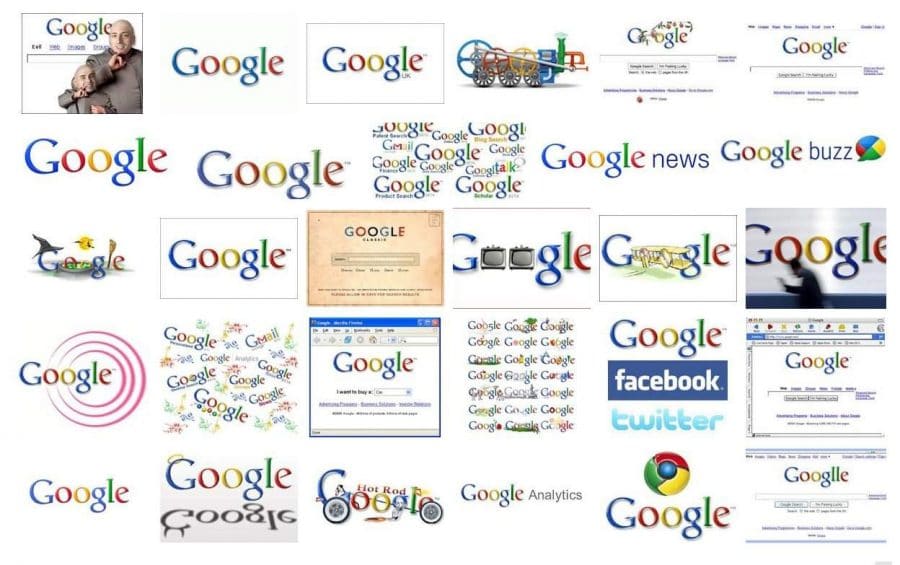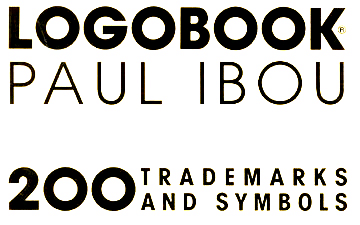
AQFG = A Question For Graham: Steve Thomas asked a question that I can totally relate to:
I know from personal experience that during a logo design project one of my main recurring thoughts I have is, “does this design exist elsewhere?”, “has the idea been done before, and if so, how similar might my idea be?”, “where the do I start looking, and where do I finish, for possible design conflicts?”
Given the immediate nature, and the global reach, of the internet we are can sometimes find out that are most prized logo design actually does exist elsewhere in a similar guise. The problem is also compounded because some people naturally, and incorrectly, assume that one person must have copied the other, and therefore land a guilty verdict without so much as a real understanding of the process and reasons.
How many times have you witnessed a logo designer being called out for seemingly copying another logo? How many of those times have you yourself condemned that designer for blatant copying without taking a much needed step back to find out just a little bit more about the situation? There are times when it seemingly appears that one design had to be copied due to the sheer number of detailed similarities, but this is not what I am really talking about.
I am talking about one persons. “this is a blatant copy”, and another’s “this is similar, and maybe inspired from, but not a copy.” Given the subjective nature of art and design then surely the practice of giving someone the benefit of the doubt could be considered before blundering in with accusations of theft and piracy.
The real point of this post post is to try and put into perspective the challenge ascertaining if your new logo design might exist, in some similar form, elsewhere before you present all your hard work to the client. We also want to try and avoid this scenario: you proudly show off your new design only for some designer in some far flung corner of the world, apparently convinced you copied it from their personal portfolio from which you could not have even been expected to be aware of, to call you out. But it does happen.
Other designers DO seem to expect other logo designers to have this super natural ability to be aware of, and know of, every possible logo design that exists in the world. Poppycock. Utter poppycock.
Let us put this into perspective
For starters consider the town you leave in: it may be a small village, a small rural town, a large town, or even a city. Let us take a small town—I live in a relatively small seaside town—and work out how many people might live in that town as well as how many companies, shops, consultants, freelancers, home based business’s might exist that will have some form of logo.
I challenge you to come up with an accurate number of how many logos might exists in use, and in private portfolios just in your own country.
I don’t think anyone could even beging to imagine the sheer number of logo designs we talking about. My country of birth, England, is just a blip on the global scene so if you then look overseas and try to apply the same investigative skills to the much larger countries, the countries that have immense populations…
We we are talking about a particularly large number of people that are likely to have some form of logo to represent them in any form, public facing, private use or even under a NDA (Non Disclosure Agreement).
Mindnumbingly Unrealistic
But wait a minute. It would be quite amiss to neglect to include those private portfolios which contribute to the overall number of conceptual designs that are completed on a daily basis that never see real commercial use, or have any form of public presence.
It’s a challenge just to scour websites like Logopond, Google, Flickr, and other numerous popular brand identity inspiration websites to find similar logo designs to the one we are working on let alone have a intimate inside knowledge of every designer’s portfolio in the world. Ever. Since logo design time started.
As a logo designer we are unrealistically expected to promise and ensure that our new logo design is original. We are then scolded and publicly humiliated should someone unearth a logo design concept that was completed as a personal project a few years ago by someone who does not even design logs for a living. Phew. As a logo designer we are expected to have this ability to be aware of every single possible logo design ever designed.
People who just love to call other people out are immature and naive as well having no clue about the sheer logistical complexity of ensuring a logo design doesn’t not infringe on another.
What we can do
The best we can do is to start by ensuring we have our ears as close to the ground as possible so that we know what is generally going on in our fast moving industry.
Keep up-to-date with the various blogs and websites that specialize in bringing us the best of logo and brand identity design on a daily basis.
Ensure we have scoured the most obvious of accessible image repositories: Google images, Flickr, Behance, Coroflot, Dribbble, Forrst, etc for any number of related keyword and phrases that sum up the project / business / company we are working on. It’s important to check out these design focused websites for the off-chance you idea falls too closely to someone else’s conceptual idea.
Keep your book library stocked with the many logo design books being published on a yearly basis as they provide a pretty good library of all the main logos submitted/found.
If you are just starting out then try to back date your collection by starting with prolific titles such as extensive LogoLounge series, definitely buy Logo as well as the Logo Design 1-3 books by Taschen.
I also have a stock of much older books by renowned designer Paul Ibou such as: LogoBook200:200 Trademarks & Symbols and Banking Symbols Collection 1& 2.
It is your responsibility to ensure you are providing your client with a design that is both appropriate, and hopefully original in one or more ways.
If you are designing around a general idea that has clearly been done before—there are many styles of logo designs that have been done to death, and continue to be stretched to their utter limit, and beyond (see first image: Scottish Arts Council vs Quark)—then take extra precautions to ascertain if you are able to apply a new level of meaning or find another aesthetic style to apply. Just because an asterisk has been used many times as a logo mark it doesn’t mean it should never be used again.
Having confidence to back up your design with solid reasoning, if you are knowingly treading close to existing design, is critical at this point. If you have just used another design because it looks cool then you are doomed, but if you have a solid strategy, a story or a narrative that provides clear reasoning for that particular design direction then this will, should, make a difference.
We simply can never assure our client, or peers for that matter, that a design we are working on in good faith might, at some point in time, be shown to look similar to some recently unearthed and never seen before design.
Wouldn’t it just be nice if designers, in general, didn’t automatically assume the worst in others? You never know when you might be unexpectedly called out, and more so when you know you it couldn’t be further from the truth.


